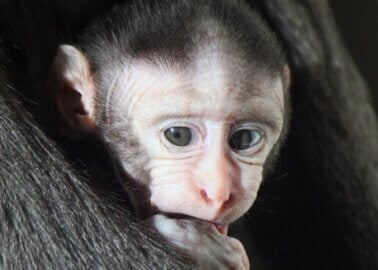Life in an Animal-Testing Laboratory: A Scientist’s Experience
Dr Julia Baines once worked to improve the welfare of mice in animal testing laboratories, but now, serving as PETA’s science policy adviser, she works to remove animals from these hellholes altogether. Forever haunted by the terror and suffering that animals face in experiments, she shares her exclusive insight into their mistreatment and her journey towards achieving meaningful positive change for them.

I’ve always been interested in animals, and I’ve dedicated my career to helping them. But nothing prepared me for the horrors I’ve seen inside animal laboratories.
I’ve seen mice torn apart by cagemates who had been driven insane and made aggressive by the stress of confinement. I’ve visited laboratories where dogs are experimented on, and I’ll never forget the anguished cries of the beagles there, who were vying for attention, longing for someone to play with. I’ve observed primates imprisoned in cramped, almost barren cages – which have no ropes for them to swing on – who are given no opportunity to socialise. They’re so desperate for affection that they reach out to passing visitors, hoping for someone – anyone – to stop and notice them.
In the coming months, millions of sensitive animals will be locked up in cages and used in cruel, painful experiments. I’ve seen their misery first hand – and we need to do everything we can to end it.
Before coming to PETA, I conducted my PhD studies in an animal laboratory, where my focus was on the welfare of mice. I was tasked with conducting some animal experiments of my own and, often, with dissecting the corpses of the very mice I’d spent weeks observing. It was excruciating to watch them being killed, but my horror was nothing compared to what they experienced. Wool would be soaked in fluoroethane and placed in a large plastic tub. The mice would then be picked up by the base of the tail and dropped into the tub. Sometimes, they would cling on to the rim, and their little toes were literally peeled away from the edge as they were forced inside so that a colleague could close the lid. As the seconds dragged on, I could hear them frantically scrambling around – and when we finally opened the tub, I’d see that the dead mice were soaked in their own urine and faeces. Those images will forever haunt me.
Later, when I became a lecturer on animal behaviour and welfare, I’d often take my students to a nearby laboratory. Even though I would warn them about what they’d see inside, most would still come out shaken and crying.
I spent years believing that I could somehow improve animals’ lives in their laboratory prisons – but eventually, I realised that the only way to achieve meaningful change for them is to get them out of laboratories. That’s when I came to work at PETA and dedicated my life to stopping tests on animals.
As PETA’s science policy adviser, I work with government and regulatory agencies to help replace animal tests with non-animal methods. My goal is to promote animal-free testing as not only more ethical but also more cost-effective and beneficial for humans.
Every day, I work to end archaic tests on animals, including cosmetics tests that are still taking place despite a ban in Europe. More and more companies are appealing regulatory decisions that require animal tests because they understand just how archaic and unreliable those tests are. The PETA International Science Consortium Ltd. (of which PETA is a member) is supporting these efforts and also promoting and funding the development of cutting-edge technology, such as in vitro methods that use human cells and tissues, to replace the use of animals in experiments.
I’m encouraged by the tremendous progress we’re making, but we need to raise awareness about animal testing, liberating animals from laboratories as quickly as possible.
What You Can Do
As EU legislators review the law designed to protect animals used in experiments, please call for a Europe-wide moratorium on all experiments on animals.



